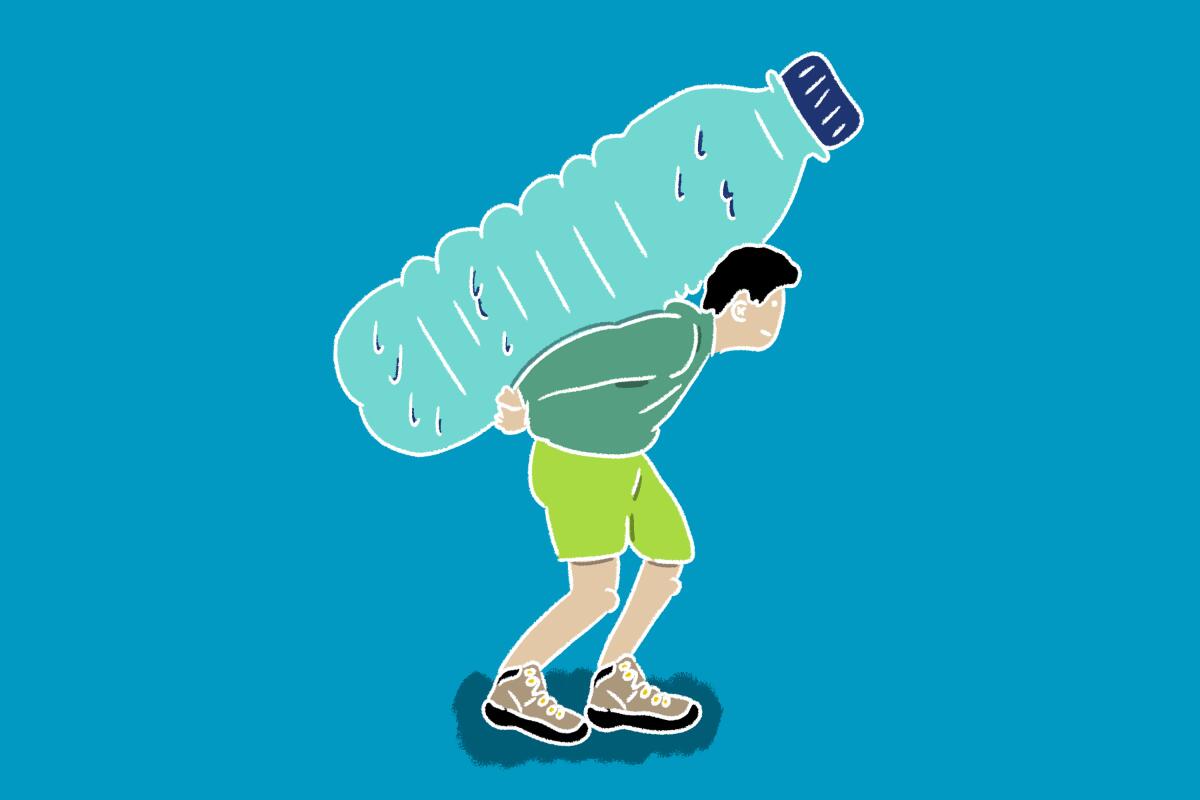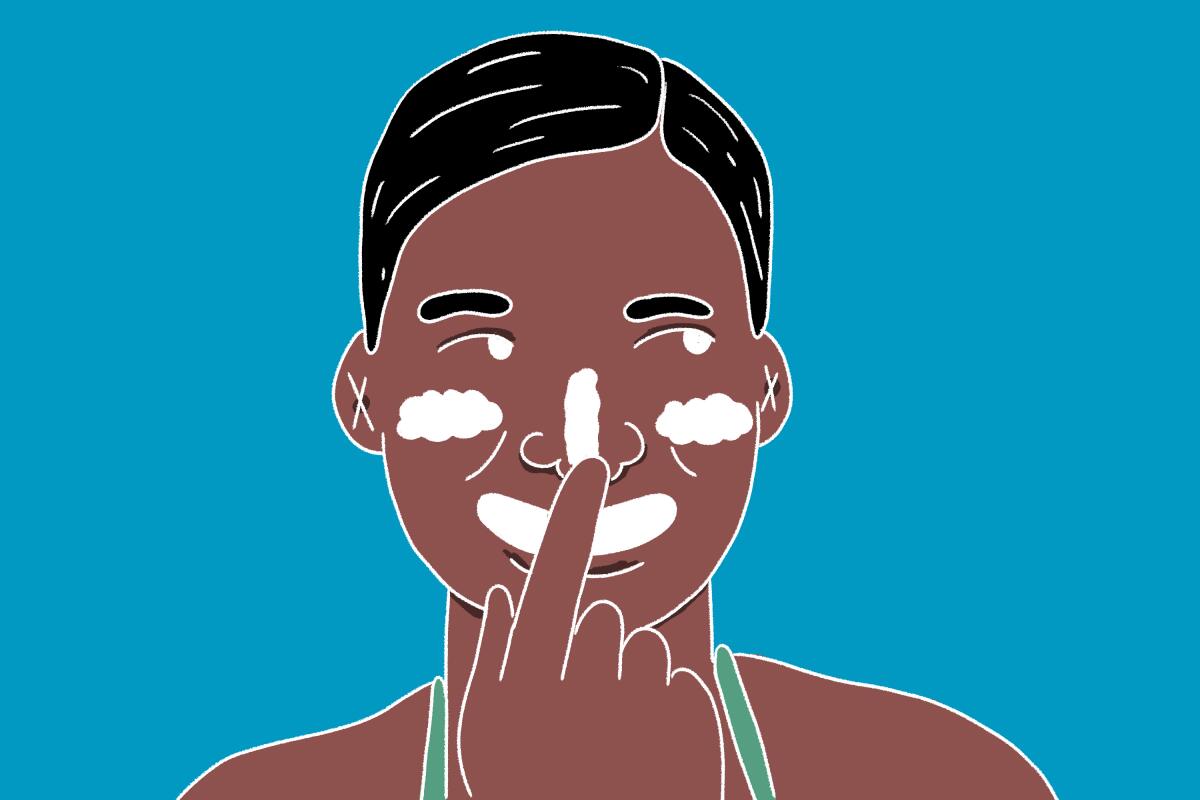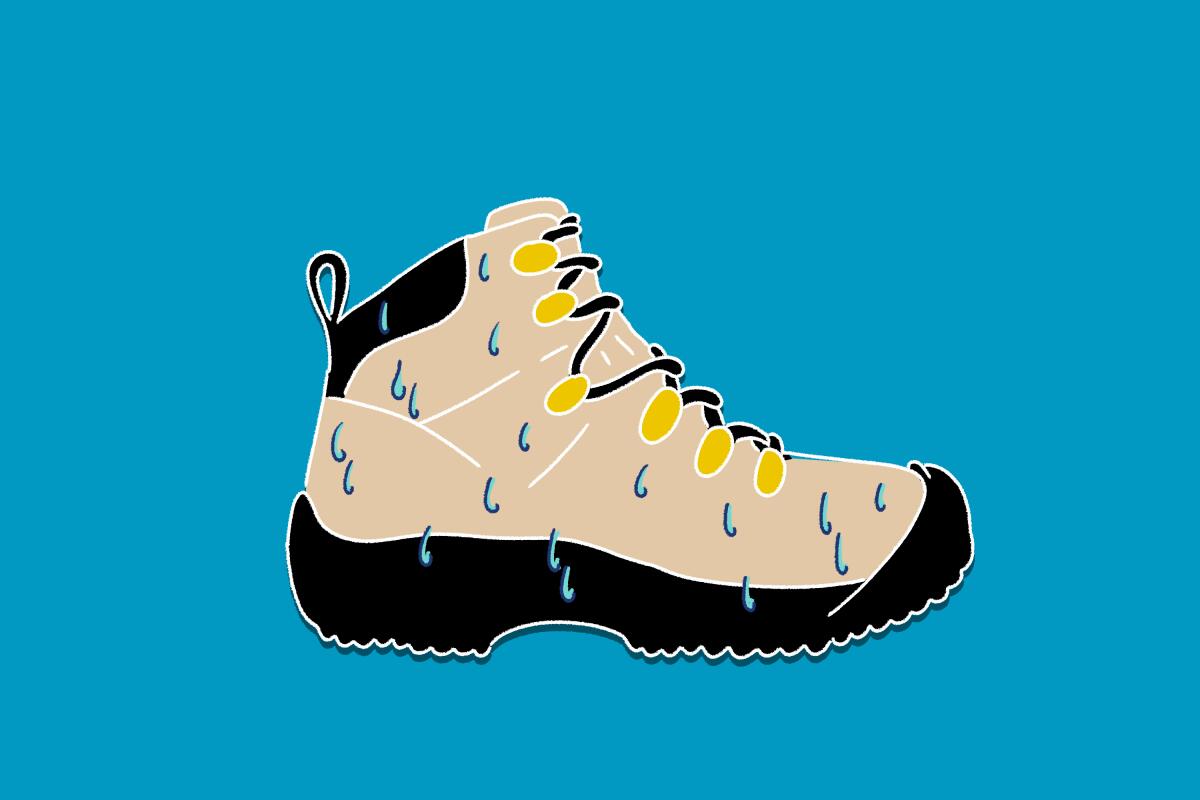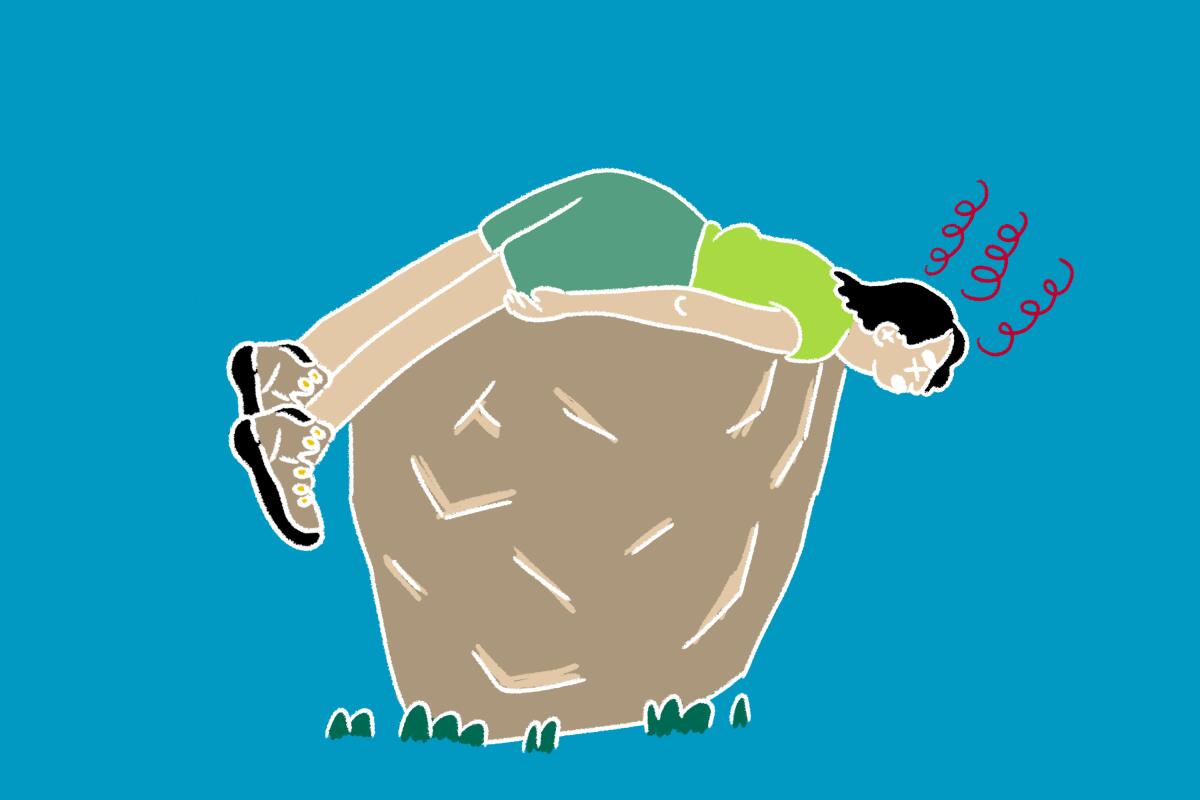14 hacks to safely hike in the L.A. heat

- Share via
When it’s hot out there — really hot — you need a sure-fire strategy for what to wear and what to bring before you go hiking. Sure, skip the down parka, but you’ll need to carry more water than you usually do. But that’s not all. I asked experts for their best advice on how to stay safe in the heat. Here’s what they told me.

Before you go
1. Check the weather forecast. Southern California has myriad microclimates — urban, mountain, coastal, desert and more — so research how hot it will be where you plan to hike. “You want to do a little research on where you’re going, what are the peak temperatures and also humidity ... that has an effect on how your body cools itself off too,” said Johnny Stevens, an REI outfitter. Don’t forget to check other conditions, such as air quality on the South Coast Air Quality Management District app and the Environmental Protection Agency’sUV Index app for sun exposure ratings. Both apps are free.
2. Avoid hiking during the hottest part of the day. This sounds simple, but it’s easy to get into trouble when you get a late start and want a hard workout. Go early (6 a.m.) or late (6 or 7 p.m.) to avoid high temperatures. In Death Valley, where extreme temperatures soar to 115-plus degrees in summer, officials warn hikers to stay away from Badwater and other low, exposed areas and suggest hitting the trails no later than 10 a.m. In most L.A. climes, the sun is strongest and UV exposure highest between 10 a.m. and 4 p.m.
Get The Wild newsletter.
The essential weekly guide to enjoying the outdoors in Southern California. Insider tips on the best of our beaches, trails, parks, deserts, forests and mountains.
You may occasionally receive promotional content from the Los Angeles Times.
3. Use sunscreen to avoid sunburn. The best time to apply sunblock is at least 15 minutes before you step out the door. “This allows the sunscreen (SPF 15 or higher) to have enough time to provide the maximum benefit,” according to the U.S. Food and Drug Administration’s website. By the way, SPF, or sun protection factor, measures how much “solar energy” or UV radiation it takes to burn unprotected skin, not — as some mistakenly believe — the amount of time it protects you. The FDA said it takes at least an ounce of sunscreen to cover the body from head to toe. Some lotions are for faces only; just make sure to coat your nose, ears and neck too. Sunscreens lose their effectiveness usually after three years, so make sure yours still works.
4. Acclimate, acclimate, acclimate. I acclimate when I hike to high elevations, but high temperatures and humidity also require getting used to. “Heat acclimation occurs over the course of four to five days,” said Dr. Daniel V. Vigil, who specializes in sports medicine at UCLA and oversees the university’s athletic teams. Head outside and do some mild workouts to give your body time to adjust to the heat. Also, make sure you’re fit enough to tackle whatever trail or peak you have planned. Heat can make you feel worse if you’re out of shape and struggling.
5. Make sure someone knows where you are going and when you’ll return. Hikers, especially those going it alone, shouldn’t skip this step when heading out. It’s always best to share your plan with a friend or loved one, but especially true when conditions are hot. Leave a copy of your itinerary in your vehicle too. It could be a life-saver; if you don’t return on time, rescue teams will know where to start looking.

On the trail
6. Carry more water than usual — and drink up. I’ve been on hikes on hot days when people proudly return with a quart or more of water. That’s not the goal. Sip enough water to replenish what you are sweating. “The human body’s main mechanism for dissipating heat is evaporation,” Vigil said. “The only way to combat intense heat is to stay hydrated, so we can sweat and evaporate heat.” How much should we drink? There’s no right answer because some people sweat profusely while others just glisten. Think about using a water well/hydration system with a drinking tube that fits in most backpacks. This setup allows you to drink without taking a break. If you prefer to use water bottles, be prepared to stop frequently for a few slugs along the way.
7. Bring electrolytes and snacks. You need something to perk you up when you start to drag. Electrolytes — essential minerals such as sodium, potassium and calcium — will help replenish what you’ve lost too. “What’s most important is that you are drinking and you are snacking,” said Gates Richards, education director for wilderness medicine at the National Outdoor Leadership School, or NOLS. “If you are doing those things you’re probably going to be fine.” Electrolyte drinks and gels help too, especially if it means you’ll eat and drink more because you like the flavor. If you work out in the heat for an hour or less you probably don’t need electrolyte replacements, Vigil said. But those planning a longer day should bring them.
8. Choose loose-fitting clothes that breathe and allow airflow. Spandex is not your friend on hot days; save it for the air-conditioned gym. Loose clothing allows air to circulate and cool you. What color you wear matters too. Black clothes absorb more heat, so you don’t want anything dark or tight-fitting against your skin. Look for shirts with mesh vents under the arms and on the back that improve airflow.
9. Wear a hat. A hat will keep the sun from frying your brain — and your neck and face — if you wear one with a wide brim. Make sure it’s well ventilated on top so your head doesn’t overheat. Experts recommend a hat that covers your ears and back and sides of your neck; straw hats may be stylish but allow in rays, if you are concerned about sun exposure. “Most baseball caps don’t do a good job with ventilation,” Stevens said. “They do shade the eyes, but I like more of a sun hat.”
10. Cover up. It may sound counterintuitive, but long pants and long-sleeved shirts are a good idea on hot days. “If you plan to hike in exposed areas, better to be covered than to be short-sleeved with shorts,” REI’s Stevens said. Sun protection may also include sun sleeves (if you’re wearing a tank top or short-sleeved shirt), a lightweight neck gaiter and sun gloves, particularly for people who use trekking poles at high elevation. Also, look for sun-blocking clothing that can help protect your skin. UPF ratings on shirts, pants and hats measure how much ultraviolet radiation can penetrate the fabric. For example, clothing labeled UPF 50 lets in only 1/50th, or 2%, of UV rays.
11. Keep your feet cool too. Heavy leather boots may make your feet sweat more than is needed. Consider lighter boots with webbing (but still offer waterproof protection) that allow some breathability. Avoid cotton socks that absorb sweat and lead to blisters. Instead, use wool or synthetic-blend socks that will keep your feet dry.
Why hike in Los Angeles? Lots of reasons. Use our guide to navigate 50 trails in Southern California, plus tips on gear and treats for the trail.
12. If you are lucky enough to find water on the trail, get wet. Water is in short supply in Southern California, but even small creeks or mountainside seeps allow you to dunk your hat or a kerchief to wear around your neck. It’s a good cool-down trick, particularly if you stop and rest in the shade. (There are “neckties” and gaiters with insulation designed to keep you wet/cool). Just don’t drink the water unless you filter or treat it.

What could go wrong
13. Stop if you or someone you are with start to feel sick. You want to push yourself on tough terrain, but heat cramps in your legs or abdomen may suddenly take hold in hot weather. Heat cramps are the result of two things: You’re low on glycogens and dehydrated, or you’ve overtaxed your muscles, Vigil said. Either way, it’s time to slow down, drink more fluids and try to stretch or massage your legs. If you’re dehydrated, you may not realize early signs, such as becoming sullen or agitated. “You have to trust the people you’re traveling with to say, ‘Yeah, you’re not as friendly as you usually are. Let’s all stop and have a drink right now,’ ” Richards said.
14. Understand the signs of more serious heat problems. Heat exhaustion and heat stroke are serious and can be fatal. Understanding what’s happening when things go wrong is important. With exhaustion, you or your buddy may look pale, feel nauseous or vomit, and complain about a headache and cramps. Stop in the shade (if you can find some) for at least half an hour, drink water with electrolytes and eat some high-energy foods. The most important thing: Don’t continue to hike; hopefully you and/or your friend can slowly hike out safely or summon help.
Heat stroke, which Vigil refers to as “cooking from the inside out,” is far more serious and deadly. Symptoms include dry skin, weak and rapid pulse, high body temperature, confusion and poor judgment, and even seizures. “Check their mental status,” Vigil said. “Maybe their sense of humor is not there, they’re not as talkative, might be a little confused. You ask, ‘Are you all right’ and they don’t answer articulately. That’s a serious sign.” The key here is to cool their body immediately and get help. Check here for more information about heat exhaustion and heat stroke from the Red Cross.
More to Read
Sign up for The Wild
We’ll help you find the best places to hike, bike and run, as well as the perfect silent spots for meditation and yoga.
You may occasionally receive promotional content from the Los Angeles Times.








